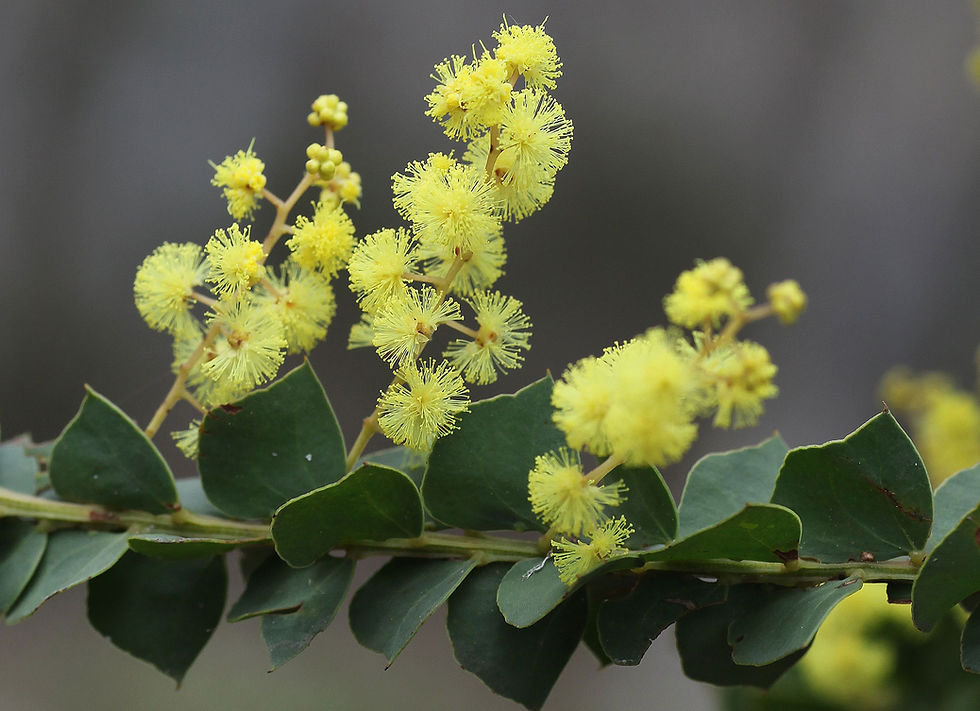Happy Wattle Day, Australia!
Updated: Sep 15, 2021
One of our most special tree species is the Acacia Pravissima, also called Ovens Wattle in English. We rarely see this tree in the Netherlands, so we don't have a common name for it. The acacia is loved worldwide for its beautiful, usually yellow, fluffy flowers. It's a shame it's so unknown here, as this version of the Australian national plant family is fairly hardy and a real addition to our European gardens.

Iconic yellow
In Australia they even have a national holiday to celebrate the acacia. Since 1992, this has been on the same day across the country: on September 1, the start of the Australian spring. The genus acacia belongs to the family mimosaceae. There are about 1350 species of acacias and about 1000 of these can be found in Australia. Australia's national floral emblem is Acacia pycnantha, the Golden Wattle. While there is no specific way to celebrate the start of the Australian Spring on September 1st, many congregations illuminate an iconic building or statue in yellow and green [1].
The Acacia genus grows throughout Australia and withstands drought, wind and wildfires. It is therefore not surprising that the tree symbolizes unity, resilience and the spirit of the Australian people. The acacia also symbolizes memory and reflection, and Australians wear a sprig of wattle on national mourning days. As a national symbol, the tree has been widely used in national items such as postage stamps and awards in the Australian honor system [2].

From garden ornament to coffin
Australia's indigenous cultures used acacias for a very wide variety of purposes, from food and medicine to utensils such as digging sticks and musical instruments. Unfortunately, much knowledge about this has been lost since European invaders drove indigenous family groups from their traditional lands [3].
Australian acacias have been planted abroad for over a century as attractive garden ornaments or glorious cut flowers. But also for their fragrant flowers to make perfume in the south of France, and on large plantations in Africa and Southeast Asia for their wood (for making paper and composite wood products) and bark (for tannin to be used for tanning leather and wood glue making). The history of the cultivation of the acacia goes back to the middle of the eighteenth century, perhaps even further than that [1].
Acacias are not only found in Australia. It is a widespread species and occurs naturally on all continents except Europe. The acacia does especially well in arid areas. For example, the Egyptians used acacia wood (from Acacia nilotica) for coffins. There the tree – also because of its good resistance to wood-eating insects - symbolizes eternal life [4]. Not a bad idea at all when you consider that some species of acacia can live up to 300 years.

Fake it till you make it
The acacia is full of resilience. You can also see that in its innovative way of life. Most acacias no longer have true leaves when they are mature plants. They often lose the feathery leaves they have as seedlings (which you still see on our baby acacias) after the first leaves. A minority of species retain true leaves throughout their lives, but in nearly all others, these are replaced by structures called phyllodes. Phyllodes are flat petioles that take over the photosynthesis function of the leaves. These take many different forms. They can vary from flattened and broad to cylindrical and acicular or sometimes absent altogether [5].
Amazing what this species can do! Who do you wish some extra resilience this fall? Give an acacia!






Comments